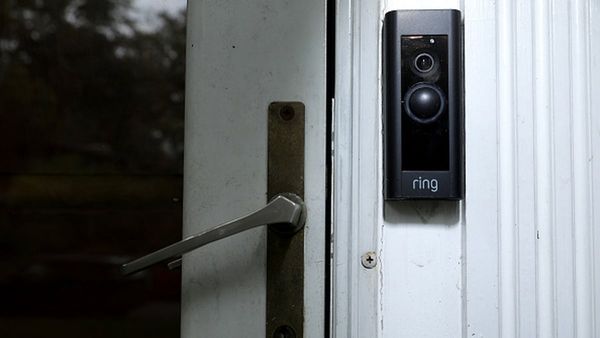A resurfaced medical case reported by Live Science has sparked widespread curiosity online. It describes a woman whose condition causes her to perceive human faces as transforming into dragon-like faces.
The unnamed patient, a 52-year-old woman from The Hague, Netherlands, visited a psychiatric clinic and told doctors that while faces initially appeared normal, they became distorted after a few minutes.
In the 2011 case, published by The Lancet three years later, the woman reported that faces “turned black, grew long pointy ears and a protruding snout, and displayed a reptiloid skin and huge eyes in bright yellow, green, blue, or red.”
A resurfaced case has drawn attention to a woman who perceives human faces as transforming into dragon-like creatures

Image credits: Freepik
She also described seeing dragon-like faces drifting towards her from walls, electrical sockets, or her computer screen. These visions occurred both in the presence and absence of people.
Doctors conducted a neurological examination, blood tests, and an electroencephalogram (EEG), a brain-scanning technique.
According to the report, the results were normal. However, an MRI of her brain showed several lesions near the lentiform nucleus. Damage to this part of the brain has been linked to cognitive impairments, such as issues with memory and processing speed, and is associated with schizophrenia and other neurological and psychiatric disorders.

The doctors suspect that the lesions revealed by the MRI may have triggered atypical electrical activity in the ventral occipitotemporal cortex, the part of the brain that processes colors and faces.
The lesions may have been present since the patient’s birth, possibly caused by temporary oxygen deprivation shortly before or after delivery, the doctors theorized, as per Live Science.
Though the 52-year-old woman had experienced the condition since childhood, it did not “bother” her at the time. However, her symptoms became more pronounced during her teenage years.
The 52-year-old Dutch patient reported that faces initially appeared normal but distorted after a few minutes

“She had full insight into the hallucinatory nature of her perceptions, and explained them in terms of a ‘brain disorder,’” the doctors described.
Considering the findings, they diagnosed the patient with a form of prosopometamorphopsia (PMO), an extremely rare neurological disorder that causes faces to appear distorted in shape, texture, position, or color.
According to the Smithsonian Magazine, fewer than 100 cases of PMO have been reported since 1904, and many doctors have never heard of the condition.

Experts believe the condition is underreported, especially because patients’ symptoms are often misdiagnosed as schizophrenia or psychosis.
One major difference is that people with PMO “don’t think that the world is really distorted—they just realize that there is something different with their vision,” explained Antônio Mello, a cognitive psychologist and neuroscientist at Dartmouth College.
Questions remain about what triggers the dysfunction in the brain network responsible for facial processing. While some patients had histories of head trauma, stroke, epilepsy, or migraines, others didn’t experience any structural changes in their brains.
She was diagnosed with PMO, a rare neurological disorder that causes human faces to appear distorted

As a result of her symptoms, the 52-year-old patient felt isolated, became depressed, and struggled with substance dependence issues for years. Despite these challenges, she managed to graduate from high school, get married, have a daughter, and become a school administrator.
Doctors reportedly prescribed her daily doses of valproic acid, an anticonvulsant used to prevent seizures and alleviate migraines as well as symptoms of bipolar disorder. The medication eliminated her visual hallucinations, it also caused her to develop auditory hallucinations, described as loud bangs occurring hours after she fell asleep.

As a result, they switched her to a rivastigmine, a medication commonly used to treat dementia symptoms. This adjustment reduced the frequency of the auditory hallucinations and kept the visual symptoms “sufficiently under control for her to function normally.”
After three years of treatment, the patient was able to maintain her job and reported an improvement in her social interactions.
Doctors theorized that lesions in her brain caused atypical electrical activity in the brain region responsible for processing faces

Last year, a 59-year-old man from Tennessee named Victor Sharrah was diagnosed with PMO after telling a doctor that people’s faces appeared demonic, with ears, noses, and mouths stretched back.
“I tried to explain to my roommate what I was seeing, and he thought I was nuts,” Victor told CNN. “Imagine waking up one morning, and suddenly everybody in the world looks like a creature in a horror movie.”
The faces only appear distorted for Victor when he sees them in person. In contrast, he sees them as everyone else does when he’s staring at them through a computer screen or in a picture.
Victor, who was diagnosed with bipolar disorder as a teen, helped create a computer-generated 2D picture of how he sees human faces to contribute to the research of PMO.
Two possible triggers were identified that may explain his hallucinations, as per NBC News. The first one is that he had carbon monoxide poisoning four months prior to his PMO symptoms. The Tennessee resident had also injured the left side of his brain as a result of a domestic accident when he was 4.
PMO is often misdiagnosed as schizophrenia or psychosis

Patients with PMO have described faces as looking “like clocks in a Dalí painting” or “kaleidoscopically changing,” as per CNN.
Referencing the 52-year-old patient’s case, Brad Duchaine, a professor of psychological and brain sciences at Dartmouth College, explained to the outlet, “The woman who saw dragons began seeing them as a child, so there are development cases of PMO in which people grow up with the condition and don’t know that faces are supposed to look different.”
“Truth is stranger than fiction,” one person said of the disturbing hallucinations





















